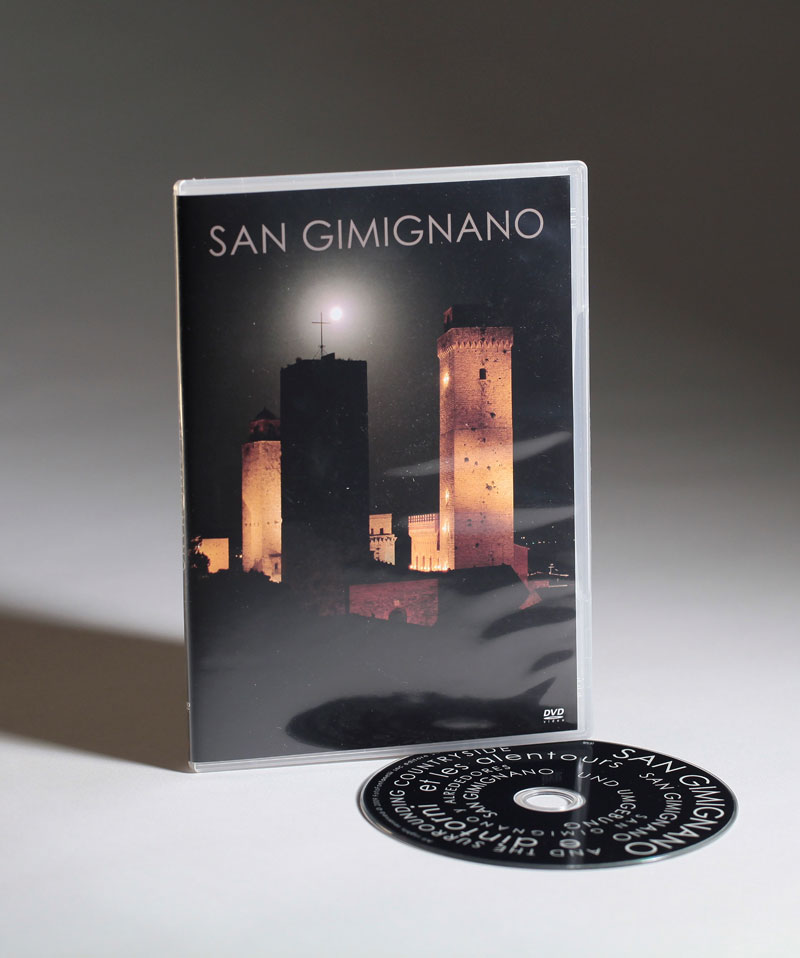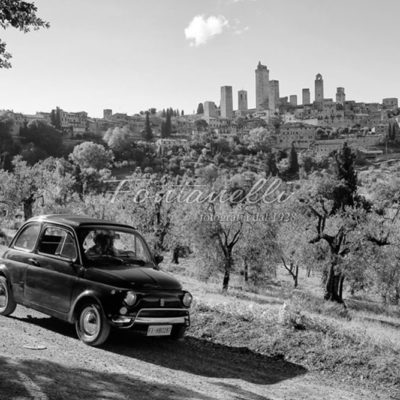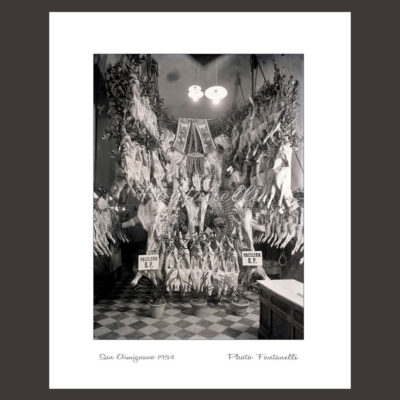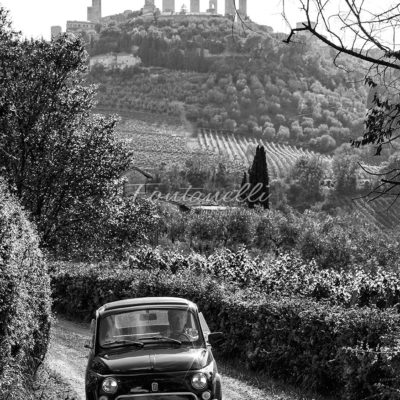San Gimignano and its surroundings Video
€10.00
San Gimignano… appears from afar with all it’s towers on hills between fields of wheat and sunflowers, between woods and vineyards. It seems that one has entered into a world already lost.Here we breathe an air of another time that helps to reaffirm history. Though the most powerful memories are those of Medieval times, nevertheless we must not forget that San Gimignano has both Etruscan and Roman origins. The city was originally called Silvia, the name given to the extension of the woods at Colle. This name was later substituted with that of San Gimignano, Bishop of Modena who travelled up and down the peninsula of Italy protecting the people from heresies.’ It was in the eh century that San Gimignano’s intervention prevented the people from further attacks by the barbaric tribes of Totila. The life of San Gimignano as a place is only documented from the 10th century when Ugo di Provenzia fought off the Bishop of Volterra and when Sigeric of Canterbury documented this stage of his pilgrimage from Rome to Ireland. The fact that Sigeric mentions the guest houses of the Hospitaller Orders is testimony that the area was crossed by various pilgrim routes, the most important being the Longobarda — Francigena. It was the presence of this pilgrim way that gave the origins and development of the town on the hill. Along this route moved merchants, pilgrims, priests, vagrants and craftsmen giving impulse to the development of the area. So it was that the village little by little was transformed in the 1100s into the walled town of San Gimignano.In the centre rising next to the wooden huts with their roofs of straw were the first palaces inhabited by aristocratic countrymen with feudal origins. Next to the palaces were constructed the towers which were symbols of power and later used as warehouses for cloth and wool. The fist tower was erected in 1100 next to the Podegta Palace. Later there were erected other towers; Ardinghelli, Salvucci, Becci and Cugnanesi, Braccieri, Ridofi and that of the Lupi called the Devlin he past the number of towers reached 72 (seventy-two), then they were reduced to 35 (thirty-five) in the 1500s and today there are 13 (thirteen).From the 1 1 th to the 13th Century there appeared the most important churches: The Collegiata, St. Frances, the ancient monastery in the Piazzale, St. Dominic that took the place of the Bishop’s Castle and the Monastery of St. Augustine.All the dwellings built on the top of the hill; that is the area between the via Castello and the area of Montestaffoli were protected by a circular wall with various gates. At the end of the 1200s there were already houses built outside the fist wall, these became the areas of San Giovanni and San Matted, and at that time they were protected by a second circular wall.During the month of June the city has revived what was the Feriae Mesium, Medieval celebrations in which all the people of the city take part, there is singing and dancing, games, competitions for horse and rider and jousting. Acrobats, musicians and singers put on shows and exhibitions, there are magicians and palmists who tell the future.The Cavaliers of Saint Fina continue the tradition of honouring the memory of Fina, Patroness of san Gimignano. The young girl spent the last years of her life on an oak table,dieing on the 12th March 1253,a day full of sunshine.The legend states that at the very moment of her death the violets on the walls and the towers of the city bursts into bloom and they are now known as the Violets of St.Fina… Watch the video preview




